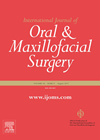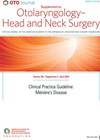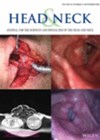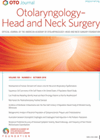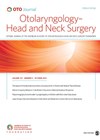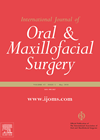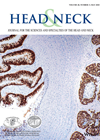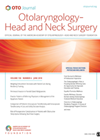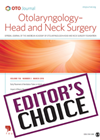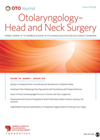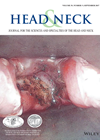
Journal Reviews
Speech predictors after glossectomy
This is a cross-sectional study from India where 69 patients were assessed for speech intelligibility and phonetics using an assessment tool in the local language. Volume defects were classified into thirds and the location of this defect noted. Not unsurprisingly,...
Treatment of internal carotid artery blowout with embolisation and bypass grafting (nasopharyngeal carcinoma)
Carotid artery blowout syndrome (CBS) occurs when there is rupture of the carotid artery causing massive epistaxis and bleeding through the oral cavity caused by tumour invasion, surgery, radiotherapy, or infection. This article proposes a revascularisation strategy for internal carotid...
Core biopsies are good enough for lymphomas
This paper, from the South of England, has reviewed ultrasound-guided core needle biopsies over a six-year period investigating the use of the detection of head and neck lymphomas. There were 367 samples included from 226 patients; 215 of the 226...
Predicting the need for salvage laryngectomy
The treatment of laryngeal cancer has seen a shift towards organ preservation strategies with non-surgical treatment offering equivalent survival outcomes. Nonetheless, salvage total laryngectomy (SLT) remains an important curative management option in cases of treatment failure or recurrence. The authors...
Intraoperative identification of primary tumours in unknown primary head and neck cancer using transoral laser microsurgery with frozen sections
The aim of the study was to compare the sensitivity and specificity of intraoperative identification of primary tumours in patients with unknown primary head and neck squamous cell carcinoma (UP HNSCC) using transoral laser microsurgery (TLM) with frozen sections, with...
Elevated prevalence of late-onset dysphagia among head and neck cancer survivors and identifying risk factors
Dysphagia is one of the most common problems affecting head and neck cancer (HNC) survivors. There are few studies investigating late-onset dysphagia post-treatment. The authors set out to investigate the prevalence of dysphagia-related diagnoses and procedures five years’ post-treatment, changes...
Lymph node ratio in tongue cancer
This is an analysis of 88 patients treated in Switzerland between 2003 and 2012. All patients had a selective neck dissection and recurrence occurred in 25 patients. Overall and disease specific survival were 72% and 80%. They specifically looked at...
Measuring the ‘impact’ of preoperative immunonutrition
Using preoperative nutritional supplements as part of ‘enhanced recovery’ in surgical patients is not a new concept. This interesting paper looks at the latest development in optimising patients undergoing head and neck oncological surgery. Immunonutrition (Nestle’s ‘Oral Impact’ in this...
What is the prognostic value of lymph node yield and density in head and neck cancer?
Neck dissection in addition to surgery of the primary site is commonly recommended in head and neck cancer treatment. However, there has been no consensus on the number of nodes that need to be removed to constitute a sufficient neck...
What to do with incidental findings on FDG PET/CT?
18F-fluoro-deoxy-glucose positron emission tomography/computed tomography (FDG PET/CT) is commonly used in head and neck cancer staging. This investigation frequently identifies incidental findings unrelated to the index head and neck cancer. To assess the nature of these incidental findings, notes of...
An algorithm to distinguish between distant metastases and metachronous lung primary in patients with HPV-related oropharyngeal cancer
Distinguishing between distant metastases of HPV-related oropharyngeal squamous cell carcinoma (OPSCC) and metachronous primary lung squamous cell carcinoma (SCC) is important as it has implications for treatment, prognosis counselling, and registry data. Although p16 immunohistochemistry (p16 IHC) is widely accepted...
Evidence for diagnostic role of narrow band imaging in the outpatient setting for head and neck squamous cell carcinoma
Narrow band imaging (NBI) uses light in the blue and green spectrum to differentiate areas of carcinoma from normal or inflammatory tissue. This tertiary referral head and neck unit in Spain used white light endoscopy as initial screening for all...

